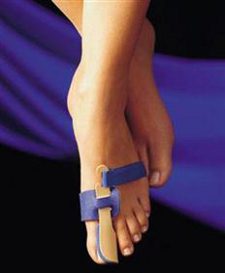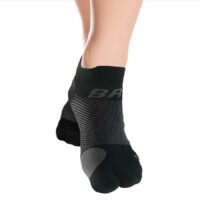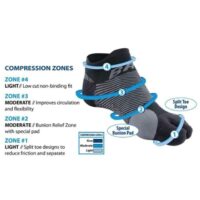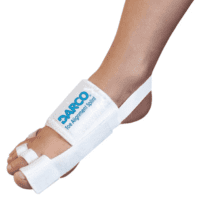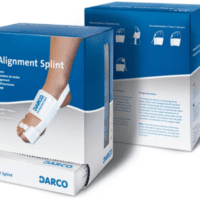Bunion
Article by John Miller

Bunion Management and Treatment Options
What is a Bunion?
A bunion, or hallux valgus, is a deformity of the big toe. It manifests as a sideways deviation towards the second toe, often accompanied by a prominent bump on the foot’s inner edge. This condition can progress to cause discomfort and pain.
The Underlying Causes
Bunions are primarily caused by biomechanical changes in the feet. Ill-fitting footwear, especially shoes with narrow toe boxes like high heels and cowboy boots, are significant contributors. They force toes into unnatural positions, leading to deformities. Other factors include genetic predisposition, foot injuries, flat feet, and overpronation.
Symptoms and Complications
The most apparent symptom of a bunion is the visible protrusion. However, it can also cause discomfort and pain, especially when wearing shoes. In severe cases, bunions can lead to complications like bursitis, hammertoe, and metatarsalgia.
Diagnosis and Evaluation
A thorough examination by a healthcare professional, typically a physiotherapist, is crucial for accurate diagnosis. They may recommend imaging tests like X-rays to assess the bunion’s severity and its impact on foot structure.

Pain Relief and Inflammation Management
Initial treatment focuses on alleviating pain and reducing inflammation. Techniques include ice therapy, soft tissue massage, and the use of anti-inflammatory medications. Your physiotherapist may also use de-loading taping techniques and recommend orthotics.
Restoring Normal Range of Motion and Posture
As pain subsides, treatment shifts towards restoring normal toe and foot joint range of motion. This phase may involve joint mobilisation, alignment techniques, and muscle stretches.
Strengthening and Muscle Control
Improving foot posture muscles is vital for correcting the biomechanics contributing to the bunion. A tailored exercise program is developed to strengthen and improve muscle control.
Related article: Active Foot Posture Exercises
Returning to Full Function
This stage aims to help patients return to their desired activities, whether it’s a simple walk or more strenuous physical pursuits. Rehabilitation is customised based on individual goals and foot demands.
Prevention of Recurrence
Ongoing care and preventive measures are essential to avoid further deformity. Recommendations may include suitable footwear choices and possibly custom-made orthotics.
Bunion Surgery: When Is It Needed?
In advanced cases where conservative treatments are ineffective, bunion surgery might be necessary. This involves correcting the toe’s alignment, often through bone realignment procedures.
Bunion Night Splints: An Aid for Alignment
Night splints can be helpful for gently realigning the toe joint during sleep, complementing other treatment methods.
The most popular bunion splints that we recommend are:
Conclusion: Managing Your Bunion
Effective management of bunions requires a comprehensive approach, incorporating proper diagnosis, phased treatment, and preventive strategies. Early intervention can significantly improve outcomes.
What to Do Next?
Consulting a physiotherapist is your first step towards managing bunions effectively. They can provide a tailored treatment plan and guidance on preventive care.
Related Articles
- Morton’s Neuroma – Provides information on foot conditions like bunions and their management.
- Metatarsalgia: Explore the causes and treatment options for metatarsalgia, a condition causing pain in the ball of the foot.
- Flat Feet (Pes Planus): Learn about flat feet, their impact on foot mechanics, and effective physiotherapy treatments.
- FHL Tendinopathy: Discover how FHL tendinopathy affects the foot and ankle, and review treatment strategies for tendon pain relief.
- Tibialis Posterior Tendinopathy: Understand the symptoms and management of tibialis posterior tendinopathy, a key contributor to foot discomfort.
- Plantar Fasciitis: Find out how plantar fasciitis causes heel pain and the physiotherapy techniques that can alleviate it.
- Heel Spur: Get insights into heel spurs, their link to foot pain, and the approaches for managing this foot condition.
- Foot Pain: A comprehensive guide to understanding various causes of foot pain and the effective treatments available.



